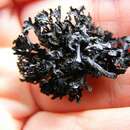en
names in breadcrumbs


Himantormia is a genus of lichenized fungi in the family Parmeliaceae. The genus, which contains two species,[2] is found in Antarctica.[3] The genus was circumscribed by British lichenologist Elke Mackenzie in 1964.[4]
Himantormia is a genus of lichenized fungi in the family Parmeliaceae. The genus, which contains two species, is found in Antarctica. The genus was circumscribed by British lichenologist Elke Mackenzie in 1964.